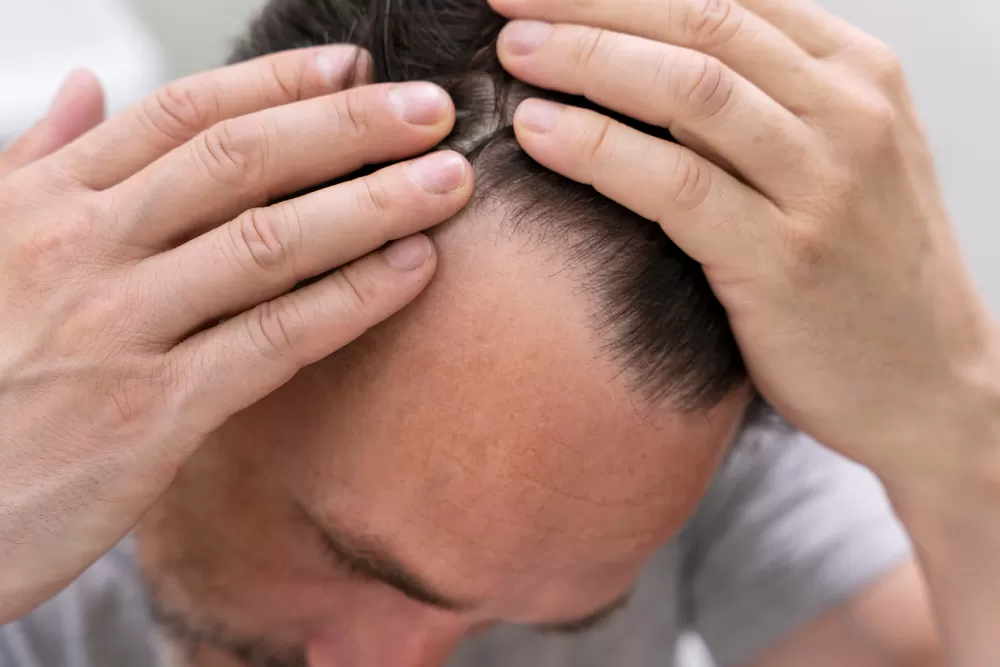Hair transplantation is a popular solution for those experiencing hair loss, but many wonder whether hair loss occurs after the procedure. This comprehensive guide explores hair loss after a hair transplant, including its causes, duration, and ways to manage it. We’ll cover the process, what to expect, and tips for optimal recovery, ensuring you have all the information you need.
What Is a Hair Transplant and How Is It Performed?
A hair transplant involves transferring healthy hair follicles (grafts) from a donor area, typically the back of the head, to areas with thinning or no hair. Modern techniques like FUE (Follicular Unit Extraction) and DHI (Direct Hair Implantation) are commonly used. The procedure includes the following steps:
Consultation and Planning: A specialist assesses the cause of hair loss and plans the transplant.
Graft Harvesting: The donor area is shaved under local anesthesia, and hair follicles are carefully extracted.
Channel Opening and Implantation: Grafts are placed in the recipient area to achieve a natural look.
Recovery Phase: Crusting and healing begin within a few weeks post-procedure.
The post-transplant period requires attention to both physical and emotional aspects, with hair loss being a primary concern for many patients.
Is Hair Loss After a Hair Transplant Normal?
Yes, hair loss after a hair transplant is typically normal and is referred to as shock loss. Shock loss is the temporary shedding of transplanted hair as the follicles adjust to their new environment. This usually occurs 2–6 weeks after the procedure and is not a cause for alarm.
What Is Shock Loss?
Shock loss occurs due to the trauma experienced by hair follicles during the transplant process. When follicles are moved from the donor area to the recipient site, they undergo temporary stress, causing the hair shafts to shed. Importantly, the follicles remain intact beneath the scalp and will regrow new hair.
Characteristics of Shock Loss
Timing: Typically begins 2–4 weeks post-procedure.
Duration: Subsides within 1–2 months.
Affected Areas: Both transplanted and surrounding native hairs may shed temporarily.
Regrowth: New hair growth begins within 3–6 months.
Can Hair Loss Occur Beyond Shock Loss?
In addition to shock loss, hair loss after a hair transplant may stem from other factors:
Natural Hair Cycle: Hair naturally grows, rests, and sheds in cycles, which a transplant does not alter.
Inadequate Care: Failure to follow post-operative care instructions can harm follicles.
Health Issues: Nutritional deficiencies, hormonal imbalances, or stress may trigger shedding.
Poor Procedure: Transplants performed by inexperienced teams may reduce follicle survival rates.
How to Minimize Hair Loss After a Hair Transplant
While it’s impossible to completely prevent hair loss after a hair transplant, certain measures can help minimize it and support recovery. Here are key tips:
1. Follow Doctor’s Instructions
Adhere strictly to post-operative washing and care guidelines.
Use recommended shampoos and lotions.
Treat the scalp gently during the first few weeks to avoid irritation.
2. Maintain a Healthy Diet
Consume foods rich in biotin, zinc, iron, and vitamin D to support hair health.
Stay hydrated to maintain scalp moisture.
3. Manage Stress
Stress can exacerbate hair loss. Practice meditation, yoga, or light exercise to reduce stress levels.
4. Limit Smoking and Alcohol
Smoking and alcohol can impair oxygen delivery to hair follicles, slowing recovery.
5. Regular Check-Ups
Schedule follow-up visits with your doctor to monitor follicle health and progress.
When Do New Hairs Grow After a Hair Transplant?
Hair regrowth after a transplant occurs in stages:
Months 1–3: Shock loss subsides, and follicles enter a resting phase.
Months 3–6: New hairs begin to emerge, often thin and fine initially.
Months 6–12: Hairs thicken and gain a more natural appearance.
Months 12–18: The final results become visible, with full density achieved.
The timeline varies based on individual factors like genetics, age, and the transplant technique used.
Is Hair Loss After a Hair Transplant Permanent?
Hair loss after a hair transplant is typically temporary and does not result in permanent hair loss. Transplanted follicles, sourced from the donor area, are genetically resistant to shedding. However, native hairs (in non-transplanted areas) may continue to thin over time due to aging or genetic predisposition. Proper post-operative care and regular check-ups are essential to maintain results.
Risks of Permanent Hair Loss
Improper Procedure: Transplants performed by unqualified practitioners may damage follicles.
Infection: Though rare, post-operative infections can affect follicle health.
Chronic Conditions: Conditions like diabetes, thyroid issues, or autoimmune diseases may impact hair health.
What to Consider Before Getting a Hair Transplant
To minimize complications like hair loss, consider the following before undergoing a hair transplant:
Choose a Qualified Specialist: Opt for a certified and experienced surgeon.
Research Clinics: Verify the clinic’s hygiene standards and patient reviews.
Set Realistic Expectations: Results depend on your hair type and extent of hair loss.
Assess Health: Complete pre-operative blood tests to ensure you’re a suitable candidate.
Frequently Asked Questions (FAQ)
How long does shock loss last after a hair transplant?
Shock loss typically starts 2–4 weeks after the procedure and resolves within 1–2 months.
Do all transplanted hairs shed?
No, only the hair shafts shed during shock loss. The follicles remain healthy and produce new hairs.
Can medications prevent hair loss after a transplant?
With a doctor’s guidance, medications like minoxidil or finasteride may be used, but they’re not suitable for everyone.
When can I use regular shampoo after a hair transplant?
You can usually switch to regular shampoo 2–4 weeks post-procedure, based on your doctor’s advice.
Does shock loss occur in everyone?
Shock loss is common but not universal. It depends on the individual’s hair characteristics and the transplant technique.
Can I exercise after a hair transplant?
Avoid strenuous exercise for 2–3 weeks. Light activities like walking may be permitted with your doctor’s approval.





No comments yet. Be the first to comment!